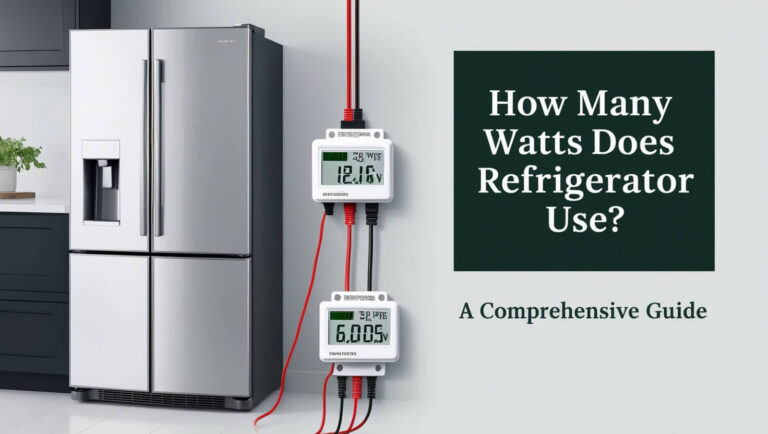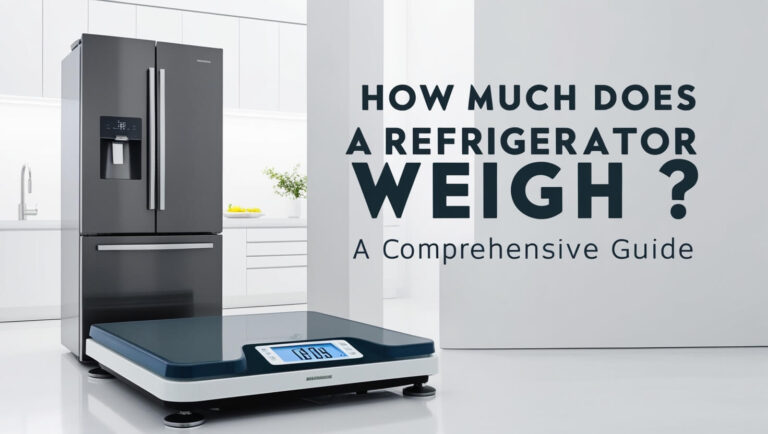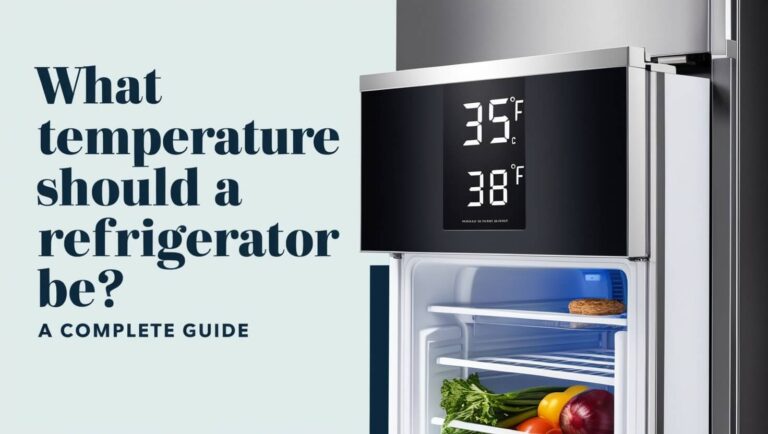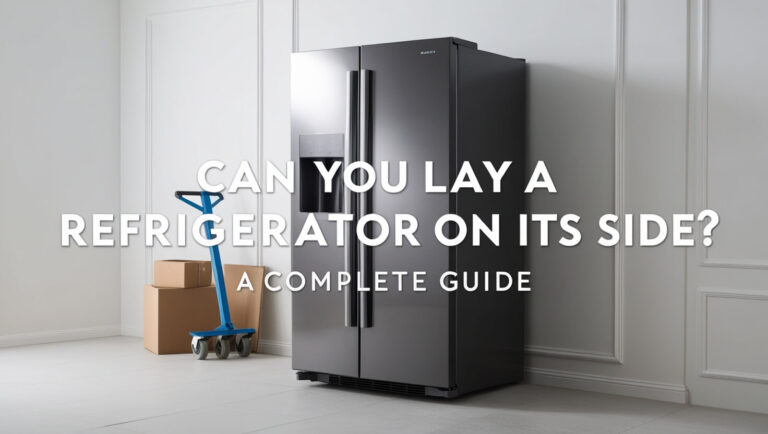How Many Amps Does a Refrigerator Use?
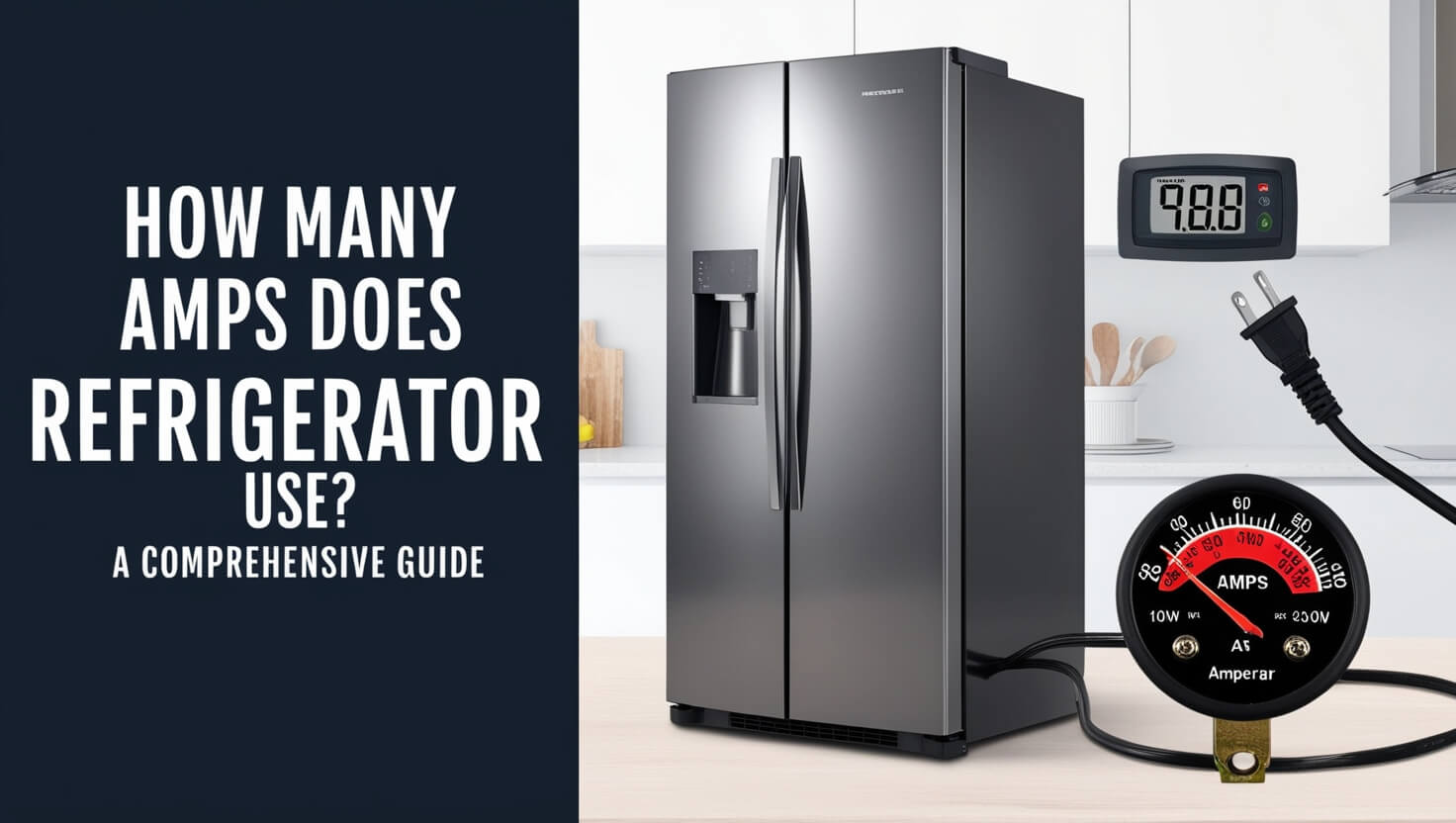
Refrigerators are essential appliances in our homes, but have you ever wondered how much electricity they consume? On average, most household refrigerators use between 3 and 6 amps. However, this can vary based on the size, type, and features of your fridge.
Understanding your refrigerator’s amperage is crucial for proper electrical planning and energy efficiency. In this guide, we’ll dive deep into the world of refrigerator power consumption and answer all your questions about refrigerator amperage.
Understanding Electrical Basics
Before we delve into the specifics of refrigerator amperage, let’s quickly review some electrical basics.
What are amps?
Amps, short for amperes, measure the flow of electric current. Think of it as the volume of water flowing through a pipe. The higher the amp rating, the more electrical current an appliance uses.
Relationship between amps, watts, and volts
To understand refrigerator power consumption, you need to know how amps relate to watts and volts:
- Watts (W) measure power consumption
- Volts (V) measure electrical potential
- Amps (A) measure current flow
The relationship between these units is expressed by the formula:
Watts = Volts × Amps
In the United States, most household outlets provide 120 volts. So, if you know your refrigerator’s wattage, you can calculate its amperage by dividing the watts by 120 volts.
Why amperage matters for refrigerators
Knowing your refrigerator’s amperage is important for several reasons:
- Electrical safety: Ensures your home’s wiring can handle the load
- Energy efficiency: Helps you understand and manage power consumption
- Appliance selection: Guides you in choosing the right refrigerator for your needs
Factors Affecting Refrigerator Amperage
Several factors influence how many amps a refrigerator uses:
Size and capacity
Generally, larger refrigerators use more amps than smaller ones. A mini-fridge might use as little as 1 amp, while a large side-by-side model could use up to 15 amps.
Type of refrigerator
Different types of refrigerators have varying power requirements:
- Top-freezer models are often the most energy-efficient
- Side-by-side and French door models tend to use more power
- Commercial refrigerators typically have higher amperage requirements
Age and energy efficiency
Newer refrigerators are usually more energy-efficient than older models. Energy Star certified refrigerators use about 15% less energy than non-certified models.
Additional features
Features like ice makers, water dispensers, and smart technology can increase a refrigerator’s power consumption.
Average Amperage for Different Types of Refrigerators
Let’s break down the typical amperage for various refrigerator types:
Mini fridges
Mini fridges, often found in dorm rooms or offices, typically use between 1 and 2.5 amps. Their small size and limited features contribute to their low power consumption.
Standard household refrigerators
Most standard household refrigerators use between 3 and 6 amps during normal operation. However, when the compressor kicks in, they may briefly draw up to 15 amps.
Side-by-side and French door models
These larger, feature-rich models generally use more power. They typically draw between 5 and 8 amps, but can spike up to 15 amps during peak usage.
Commercial refrigerators
Commercial refrigerators, found in restaurants and grocery stores, have higher power requirements. They often use 10 amps or more, with some models drawing up to 20 amps or higher.
How to Calculate Your Refrigerator’s Amperage
Wondering how many amps your specific refrigerator uses? Here’s how to find out:
Reading the appliance label
The easiest way to determine your refrigerator’s amperage is to check the appliance label. This label is usually located inside the fridge or on the back. It should list the voltage and either the amperage or wattage.
Using wattage to determine amperage
If your label only shows wattage, you can calculate the amperage using this formula:
Amps = Watts ÷ Volts
For example, if your refrigerator uses 600 watts and runs on 120 volts:
600 watts ÷ 120 volts = 5 amps
Energy Star ratings and what they mean
Energy Star ratings provide valuable information about a refrigerator’s efficiency. While they don’t directly state amperage, they do show estimated annual energy consumption in kilowatt-hours (kWh). You can use this to calculate average daily wattage and then convert to amps.
Refrigerator Amperage vs. Other Household Appliances
To put refrigerator amperage in perspective, let’s compare it to other common household appliances:
Comparison with kitchen appliances
- Microwave: 5-10 amps
- Dishwasher: 10-15 amps
- Electric oven: 20-50 amps (at 240 volts)
Comparison with other major appliances
- Washing machine: 5-15 amps
- Clothes dryer: 15-30 amps (at 240 volts)
- Air conditioner: 15-20 amps
As you can see, refrigerators generally use less power than many other major appliances. However, because they run continuously, their total energy consumption can be significant.
Impact of Refrigerator Amperage on Electrical Systems
Understanding how your refrigerator’s amperage affects your home’s electrical system is crucial for safety and efficiency.
Circuit requirements for refrigerators
Most household circuits are rated for 15 or 20 amps. A refrigerator should ideally be on a circuit that can handle at least 15 amps to accommodate occasional power spikes.
Dedicated circuits: when and why they’re necessary
Many electricians recommend a dedicated circuit for refrigerators. This means no other appliances share the same circuit. Dedicated circuits prevent overloads and ensure your fridge always has the power it needs.
Potential issues with high amperage draw
If a refrigerator draws more amps than a circuit can handle, it can trip the circuit breaker or blow a fuse. In extreme cases, it could even cause electrical fires. That’s why it’s essential to ensure your refrigerator’s amperage is appropriate for your home’s electrical system.
Tips for Reducing Refrigerator Amperage and Energy Consumption
Want to lower your refrigerator’s power usage? Try these tips:
Proper placement and maintenance
- Keep your fridge away from heat sources like ovens or direct sunlight
- Ensure proper ventilation around the refrigerator
- Clean the coils regularly to improve efficiency
Temperature settings and organization
- Set the fridge temperature between 37-40°F (3-4°C)
- Keep the freezer at 0°F (-18°C)
- Organize contents to minimize door opening time
Upgrading to energy-efficient models
Consider replacing old refrigerators with Energy Star certified models. These can significantly reduce power consumption and save money on energy bills in the long run.
Common Questions About Refrigerator Amperage
Let’s address some frequently asked questions about refrigerator amperage:
Can a refrigerator be on a 15 amp circuit?
Yes, most standard household refrigerators can operate on a 15 amp circuit. However, it’s important to ensure that the refrigerator is the only major appliance on that circuit to prevent overloads.
How many refrigerators can be on a 20 amp circuit?
While a 20 amp circuit can technically handle more than one refrigerator, it’s generally recommended to have only one refrigerator per circuit. This prevents potential overloads and ensures stable power supply to your fridge.
Do refrigerators need a dedicated circuit?
While not always required by electrical codes, having a dedicated circuit for your refrigerator is highly recommended. It ensures your fridge always has the power it needs and prevents other appliances from interfering with its operation.
Future Trends in Refrigerator Energy Efficiency
The future of refrigeration is looking increasingly energy-efficient. Here are some trends to watch:
Technological advancements
- Improved compressor technology
- Better insulation materials
- Smart features for optimized energy use
Energy standards and regulations
Governments worldwide are implementing stricter energy efficiency standards for appliances. This push towards greater efficiency will likely result in refrigerators that use even less power in the future.
Final Checkpoint
Understanding how many amps a refrigerator uses is crucial for proper electrical planning and energy management in your home. While most household refrigerators use between 3 and 6 amps, factors like size, type, and features can significantly impact power consumption.
By considering your refrigerator’s amperage when choosing a new model or managing your home’s electrical system, you can ensure safe operation and optimal energy efficiency. Remember to look for Energy Star certified models, provide proper maintenance, and consider a dedicated circuit for your fridge to maximize its performance and lifespan.
As we move towards a more energy-conscious future, staying informed about your appliances’ power consumption is more important than ever. With the knowledge gained from this guide, you’re well-equipped to make smart decisions about your refrigerator’s energy use and contribute to a more sustainable home environment.


